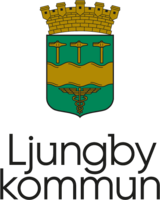Hallsjö odlingslandskap
Archeologiczny
- Województwo: Kronobergs län
- 6454.97 km od Ciebie
Akcje
Opis
Hallsjö constitutes a valuable agricultural landscape whose composite ancient monument environments indicate long settlement continuity next to a church site abandoned in the 1500s.
In the northern part of the area, there are three large cairns, each about 15 meters in diameter. These can likely be dated to the Bronze Age. The Iron Age settlement is represented by three burial grounds with a total of 150 ancient monuments, mainly mounds. The church ruin is the remains of a church likely built in the 1300s, just north of the area’s largest burial ground. It existed for about 200 years and probably fell into disrepair in the latter half of the 1500s.
The settlement consists of three farms: Norregården, Skattegården, and Södregården, whose locations have a notably scattered character. From south to north, road 557, the old national road, runs through the area, and immediately to the west, the environment is bordered by the E4, which has cut off the connection to the village’s traditional meadows down towards the Lagan River.
Judging by the ancient monument environment, the area, like the rest of the Lagan Valley, has been inhabited since prehistoric times, at least as far back as the Bronze Age. For a short period during the Middle Ages, Hallsjö was an annex parish first under Vittaryd and then Dörarp. In the 1500s, the area was finally merged with Dörarp because the population was too small to maintain its own priest. There may also be a connection with Danish troops destroying the church, which has since lain in ruins. Possibly, there was a wooden church before this, perhaps a hall church.
This translation is AI-generated.
Działania i udogodnienia
-
Archeologiczny
Kontakt
Adres e-mail
Logotyp organizacji

Pytania i Odpowiedzi
Zadaj pytanie innym użytkownikom Naturkartan.



